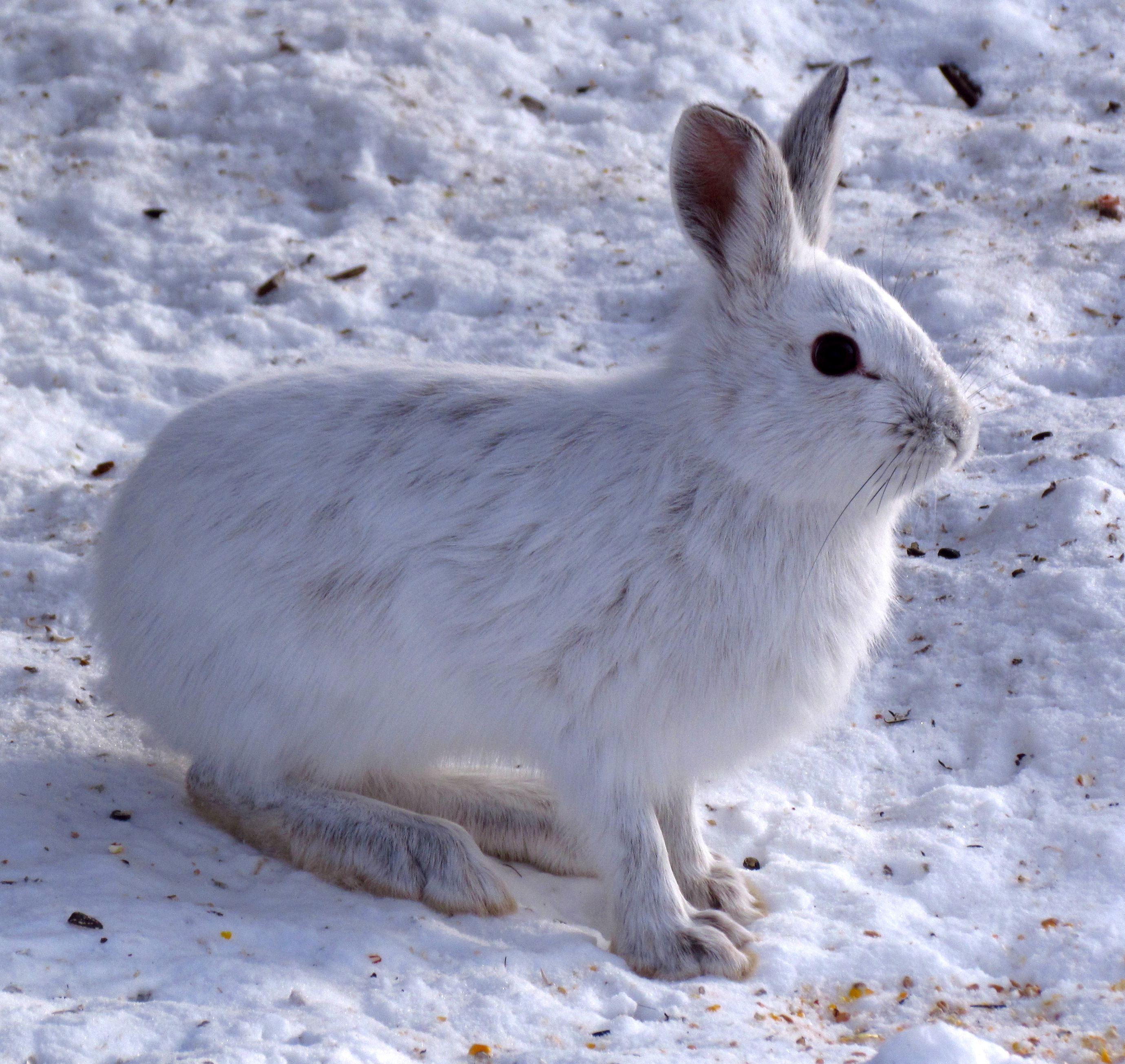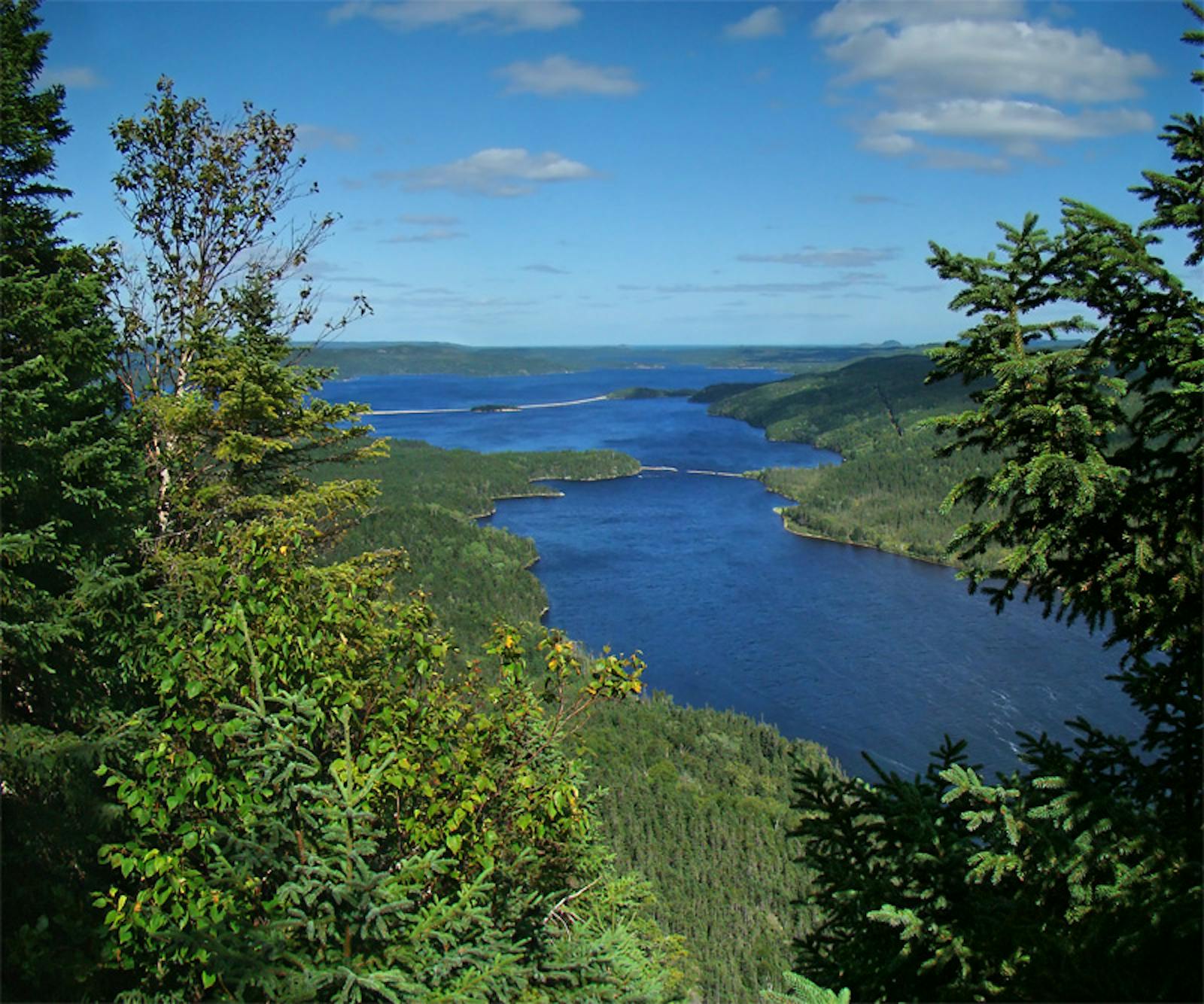Eastern Canadian Boreal Forests
The ecoregion’s land area is provided in units of 1,000 hectares. The conservation target is the Global Safety Net (GSN1) area for the given ecoregion. The protection level indicates the percentage of the GSN goal that is currently protected on a scale of 0-10. N/A means data is not available at this time.
Bioregion: Canadian Shield & Coastal Taiga-Forests (NA9)
Realm: Subarctic America
Subrealm: Canadian Boreal Forests
Ecoregion Size (1000 ha):
46,515
Ecoregion ID:
373
Conservation Target:
91%
Protection Level:
0
States: Canada: QC, NL
The Eastern Canadian Boreal Forests ecoregion includes much of eastern Quebec, the southern part of Labrador, and the entire island of Newfoundland. The mainland portion of the ecoregion is virtually all on the Canadian (Precambrian) Shield, the huge mass of exposed Precambrian igneous and metamorphic rocks (especially granitic gneisses) that forms the ancient geological core of the North American continent, some 2.5–4.2 billion years old.

The snowshoe hare (Lepus Americanus) is the flagship species of the Eastern Canadian Boreal Forests ecoregion, located in the Canadian Shield & Coastal Taiga-Forests bioregion (NA9). Image credit: Courtesy of Gordon E. Robertson
Anticosti Island (Quebec) lies at the outlet of the Saint Lawrence River into the Gulf of Saint Lawrence and represents a Lower Paleozoic (Ordovician and Silurian) sedimentary basin of limestones and shales overlying Precambrian Shield basement rocks. Newfoundland contains the most northern range of the Appalachian Mountains, the Long Range.
This island has a complex and fascinating geology, including ancient (more than 500 million-year-old) granites, oceanic mantle and crusts, volcanic rocks, and Paleozoic sedimentary rocks. Extensive serpentine and limestone barrens are present (see below). Glaciations strongly affected this ecoregion, which is still rising from post-glacial rebound (a rise in the land surface after retreat of the heavy ice sheets) after the last glaciation ended about 12,000 years ago.
The mid-boreal climate of this ecoregion is characterized by cool summers and winters that are harshly cold in Quebec and Labrador, but milder and snowier in Newfoundland due to the maritime influence. Coastal areas are prone to heavy fog. Sea ice, especially around the Strait of Belle Isle between Newfoundland and Labrador, affects the adjacent terrestrial climate.
.jpg)
Woodland caribou. Image credit: Courtesy of Beezart, Flickr
The boreal forest of this ecoregion is dominated by balsam fir and black spruce in the west, with increasing dominance of balsam fir to the east, again reflecting the maritime influence. White spruce dominates coastal areas because of its high tolerance of salt spray. Paper birch, quaking aspen, and black spruce are typical of sites after fire.
The warmer Lac Saint-Jean valley of Quebec contains mixed temperate-boreal forest with sugar maple, beech, and yellow birch on uplands and eastern hemlock, balsam fir, white pine, and white spruce in lower areas. Non-forest communities are especially important for biodiversity in this ecoregion. These include the unique maritime heath community of Newfoundland and the Gulf of St. Lawrence shore of Quebec.
The serpentine barrens of Newfoundland are some of the most extensive in the world and have been called “perhaps the most striking physiographic features in Atlantic Canada”. Composed mainly of the rock peridotite, the high concentration of magnesium and heavy metals and the low concentration of calcium in these barrens result in 85-90% cover of bare rock. Many rare plants occur on these barrens.
The limestone barrens, cliffs, ponds, and fens of Newfoundland and southern Labrador are even more interesting biologically. These habitats on Newfoundland contain 115 of the 270 rare plant species on the island, including 29 that grow nowhere else on the island and three that are strict endemics (found nowhere else in the world). Endemic species are extremely rare in glaciated boreal regions such as this, due to the relative youth of the landscape.
Only the northern tip of the island was covered by the ice sheet, however; most of the rest of the island was covered by an independent ice cap that originated on uplands and spread out towards the coast, perhaps leaving some small areas unglaciated. Nevertheless, much of the limestone habitat present today has been exposed above sea level relatively recently due to post-glacial rebound. Mammals inhabiting this ecoregion include moose, woodland caribou, snowshoe hare, lynx, black bear, and wolf; the Newfoundland wolf is an extinct subspecies.
This ecoregion has only 4% of its area protected, but most of the region is wildland (i.e., 58% of natural habitat remains outside of protected areas).
Priority conservation actions for the next decade:
- Protect remaining intact blocks of natural vegetation, roadless areas, and undeveloped rivers and lakes.
- Greatly increase federal and provincial designation of conservation lands.
- Improve management of existing conservation lands, especially with respect to fire and carnivores (wolves, bears, and lynx).
-
-
1. Ricketts, T.H. et al. 1999. Terrestrial Ecoregions of North America: A Conservation Assessment. Island Press, Washington, D.C.
2. Elliott-Fisk, D.L. 2000. The taiga and boreal forest. In M.G. Barbour and W.D. Billings, editors. North American Terrestrial Vegetation, 2nd edition. Cambridge University Press, Cambridge, U.K.
3. South, G.R., editor. 1983. Biogeography and Ecology of the Island of Newfoundland. Kluwer, Dordrecht, Netherlands -
Cite this page: Eastern Canadian Boreal Forests. Ecoregion Snapshots: Descriptive Abstracts of the Terrestrial Ecoregions of the World, 2021. Developed by One Earth and RESOLVE. https://www.oneearth.org/ecoregions/eastern-canadian-boreal-forests/
-



